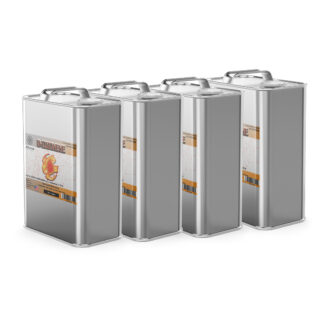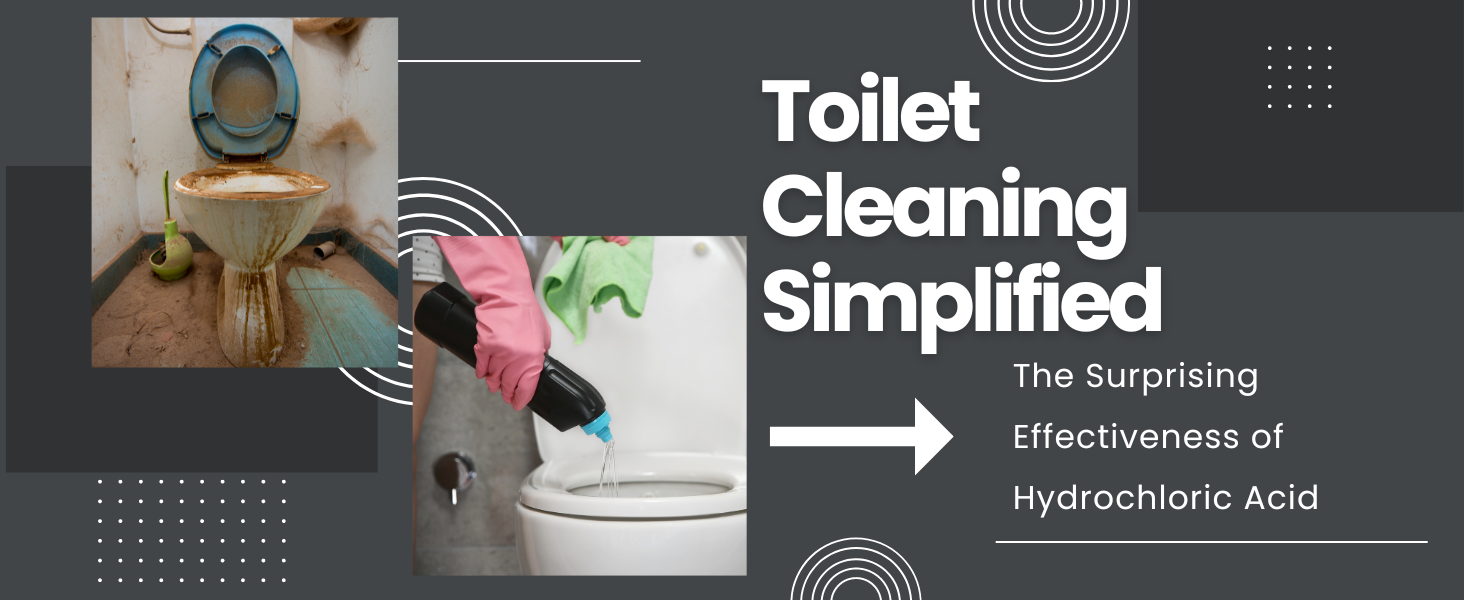
Choosing the Right Solvent for Cannabis Extraction: A Comprehensive Guide
- Introduction to Cannabis Extraction
- Understanding Cannabinoids and Terpenes
- Criteria for Solvent Selection
- Detailed Overview of Common Solvents
- Pros and Cons of Each Solvent
- Advanced Extraction Techniques
- Safety and Compliance in Extraction
- Environmental Sustainability in Extraction
- Future Trends and Research in Cannabis Extraction
- Conclusion
- References and Further Reading
Introduction to Cannabis Extraction
The art and science of cannabis extraction lie at the heart of unlocking the medicinal and recreational potential of cannabis. This intricate process involves the isolation of valuable cannabinoids and terpenes, which are responsible for the plant’s therapeutic properties and distinctive aromas. The choice of extraction method and solvent plays a pivotal role in determining the efficiency, safety, and quality of the final product.
Diving Deeper into Cannabis Extraction:
- Understanding the Cannabis Plant: An introduction to the complex composition of cannabis, including its various cannabinoids and terpenes, and their unique interactions.
- Extraction Methods Overview: A comprehensive exploration of different extraction methods, such as supercritical CO2 extraction, solvent-based extraction, and solventless techniques, each with their own advantages and applications.
- The Critical Role of Solvents: An in-depth look at how solvents facilitate the extraction of desirable compounds from cannabis, and the factors that influence solvent choice, including solubility, selectivity, and safety considerations.
- Challenges in Cannabis Extraction: Addressing the technical and safety challenges in extraction, such as managing solvent toxicity, ensuring product purity, and optimizing extraction efficiency.
Technological Advancements and Industry Trends: Highlighting the latest advancements in extraction technology, focusing on innovations that enhance safety, efficiency, and sustainability. The section also delves into emerging trends in the cannabis industry and their impact on extraction methodologies.
This enriched introduction aims to provide a comprehensive foundation for understanding the complexities and nuances of cannabis extraction, setting the stage for a deeper discussion on solvent selection and its pivotal role in the extraction process.
Understanding Cannabinoids and Terpenes
This section delves into the chemical heart of the cannabis plant, exploring the diverse array of cannabinoids and terpenes. It highlights the unique properties of compounds like THC, CBD, and others, and their significance in extraction processes.
Key Components of the Cannabis Plant:
- Cannabinoids: Detailed exploration of cannabinoids, their therapeutic effects, and their solubility properties which are crucial for effective extraction.
- Terpenes: Understanding terpenes, the aromatic compounds in cannabis, their role in the entourage effect, and the challenges in preserving their delicate nature during extraction.
Chemical Profiles and Solubility: An in-depth look at how the chemical profile of each compound influences its solubility and the choice of extraction method and solvent. This section also examines the importance of preserving the integrity of these compounds to maintain their therapeutic properties.
This section aims to provide a solid foundation of the primary compounds in cannabis, setting the stage for discussing the intricacies of their extraction.
Criteria for Solvent Selection
Choosing the right solvent is a pivotal decision in cannabis extraction, impacting everything from the quality of the extract to environmental sustainability. This section provides a comprehensive guide for novices, breaking down complex concepts into understandable elements.
Detailed Factors in Solvent Selection:
- Extraction Efficiency: Understanding how different solvents affect the extraction of cannabinoids and terpenes, focusing on yield and potency.
- Safety Considerations: Detailed discussion on the toxicity and flammability of various solvents, and the necessary safety protocols to mitigate risks.
- Environmental and Health Impacts: Assessing the ecological footprint of solvents and their potential health implications, advocating for eco-friendly and non-toxic options.
- Quality and Purity: Exploring how solvent choice affects the purity of the final product, including the importance of minimizing residual solvents.
- Economic Aspects: Considering the cost-effectiveness of solvents, including factors like reusability and operational costs.
- Regulatory Compliance: Overview of legal regulations surrounding solvent use in cannabis extraction, emphasizing the importance of adherence to industry standards.
This comprehensive guide aims to provide novices with a clear understanding of the complexities in solvent selection, equipping them with the knowledge to make informed choices in the field of cannabis extraction.

Detailed Overview of Common Solvents
This section delves into the chemical intricacies and practical applications of commonly used solvents in cannabis extraction, providing a comprehensive understanding for both novices and seasoned professionals.
Comprehensive Analysis of Solvents:
- Ethanol (Ethyl Alcohol): A deep dive into its extraction efficiency, ideal conditions for use, its interaction with different cannabinoids, and methods to mitigate the extraction of unwanted compounds like chlorophyll.
- Isopropyl Alcohol: Examination of its rapid extraction capabilities, suitability for specific types of extracts, and detailed safety guidelines for handling and usage.
- n-Heptane: Insights into its high purity level, cost-benefit analysis compared to other solvents, and specific applications in distillate production.
- D-Limonene: Exploration of its eco-friendly profile, effectiveness in terpene preservation, and unique challenges in cannabinoid extraction.
- Hexane: Detailed analysis of its extraction efficiency, toxicity concerns, and stringent safety measures required for handling.
- Ethyl Acetate: Discussion on its balance between efficiency and toxicity, and strategies to minimize the extraction of non-target compounds.
By providing an in-depth understanding of each solvent, this section aims to empower readers with the knowledge to make informed decisions in their extraction processes.
Pros and Cons of Each Solvent
This section delves deeper into the characteristics of each solvent used in cannabis extraction, offering a comprehensive analysis of their advantages and disadvantages. This detailed exploration is essential for making informed decisions tailored to specific extraction needs and contexts.
Detailed Analysis of Solvent Characteristics:
-
Ethanol:
Pros: Ethanol is renowned for its broad extraction spectrum, capturing a wide range of cannabinoids and terpenes. It’s generally regarded as safe by the FDA and is less toxic than many other solvents, making it a popular choice for large-scale operations.
Cons: Despite its safety profile, ethanol can extract unwanted chlorophyll and waxes, requiring further refinement. It’s also highly flammable, necessitating strict safety protocols.
-
Isopropyl Alcohol:
Pros: Known for its cost-effectiveness, isopropyl alcohol provides a quick and efficient extraction process, making it suitable for rapid operations and small-scale extractions.
Cons: It’s less selective than other solvents, potentially pulling more unwanted materials. Also, its use is typically limited to smaller operations due to scalability and purity concerns.
-
n-Heptane:
Pros: n-Heptane is valued for its high purity and efficiency, especially in producing distillates. It’s a preferred solvent for achieving high clarity and purity in final products.
Cons: However, it’s more expensive than some alternatives and carries significant flammability and health risks, requiring rigorous safety measures.
-
D-Limonene:
Pros: D-Limonene is a naturally derived solvent from citrus fruits, celebrated for its non-toxic nature and exceptional ability to extract terpenes, enhancing the flavor and aroma profile of extracts.
Cons: It’s less efficient in extracting cannabinoids and can be more costly than synthetic solvents, which may limit its use in some operations.
-
Hexane:
Pros: Hexane excels in cannabinoid extraction, offering high efficiency and scalability for large-scale operations. It’s a strong solvent that ensures a high yield of desired compounds.
Cons: Its toxicity is a major concern, requiring strict adherence to safety and handling protocols. Environmental and health impacts necessitate careful management and post-processing.
-
Ethyl Acetate:
Pros: As a naturally occurring compound in fruits, ethyl acetate provides a balance of efficient extraction while being less toxic than other synthetic solvents. It’s suitable for a variety of extraction needs.
Cons: However, like many solvents, it can extract non-target compounds, and its flammability poses a safety risk that must be managed carefully.
Understanding the complexities of each solvent’s chemical behavior, safety profile, and environmental impact is crucial for optimizing the extraction process. This section aims to provide readers with a nuanced and comprehensive understanding of each solvent’s capabilities and limitations, facilitating a more educated and effective approach to solvent selection in cannabis extraction.
-
 n-Heptane 99% ACS$29.00 – $6,600.00
n-Heptane 99% ACS$29.00 – $6,600.00 -
 D-Limonene Food Grade$43.00 – $11,800.00
D-Limonene Food Grade$43.00 – $11,800.00 -
 Denatured Alcohol 200 Proof 3C$25.00 – $4,995.00
Denatured Alcohol 200 Proof 3C$25.00 – $4,995.00 -
 Hexane ACS Reagent Grade$38.00 – $8,640.00
Hexane ACS Reagent Grade$38.00 – $8,640.00 -
 Isopropyl Alcohol 99.9% ACS Reagent Grade$22.00 – $3,600.00
Isopropyl Alcohol 99.9% ACS Reagent Grade$22.00 – $3,600.00
Advanced Extraction Techniques
As the cannabis industry evolves, so do the methods used to extract its valuable compounds. Advanced extraction techniques are at the forefront of producing purer, more potent, and high-quality products. These methods leverage cutting-edge technology and scientific principles to isolate cannabinoids and terpenes, ensuring that the final product retains the plant’s original profile and benefits.
Supercritical CO2 Extraction
Supercritical CO2 extraction is a popular method known for its efficiency and safety. It uses carbon dioxide at supercritical conditions to dissolve and extract cannabinoids and terpenes. This method is highly favored for its ability to precisely target specific compounds and its eco-friendly nature.
Ultrasound-Assisted Extraction
This technique uses ultrasonic waves to agitate the plant material, breaking down cell walls and releasing cannabinoids and terpenes. It’s known for its rapid processing time and ability to preserve the integrity of the extracted compounds.
Microwave-Assisted Extraction
Microwave-assisted extraction utilizes microwave energy to heat the plant material and solvents, speeding up the extraction process and improving yield. It’s a technique that’s gaining attention for its efficiency and reduced solvent use.
Enzyme-Assisted Extraction
Enzyme-assisted extraction involves using enzymes to break down the plant cell walls, making the cannabinoids and terpenes more accessible for extraction. This method is gentle and can be tailored to target specific compounds.
These advanced techniques represent the cutting edge of cannabis extraction. They aim to improve product quality, safety, and sustainability. As the industry continues to grow, these methods are expected to become more refined, opening up new possibilities for cannabis products and their applications.
Safety and Compliance
While pursuing advanced extraction techniques, it’s crucial to adhere to safety standards and regulatory compliance. Ensuring the purity of the extract and the safety of the production environment is paramount.
Environmental Sustainability
Advanced extraction methods are also evaluated based on their environmental impact. Techniques that reduce solvent use, energy consumption, and waste are particularly valuable in promoting sustainability in the cannabis industry.
As research progresses, these advanced techniques will likely become more accessible and refined, contributing to the ongoing evolution of cannabis extraction and its role in producing high-quality, therapeutic products.
Safety and Compliance in Extraction
Ensuring safety and compliance in cannabis extraction is not only a legal necessity but also a moral one, aiming to protect workers, consumers, and the environment. As the industry grows, so does the importance of adhering to strict safety standards and regulatory guidelines.
Regulatory Compliance
Compliance with local, state, and federal regulations is critical. Extractors must stay informed about the ever-changing legal landscape, including licensing, product testing requirements, and safety regulations. Failure to comply can result in severe penalties, including fines and shutdowns.
Workplace Safety
Safety in the extraction lab is paramount. This includes proper ventilation to avoid the buildup of hazardous fumes, using closed-loop systems to prevent explosions, and ensuring all equipment is operated according to manufacturer guidelines. Regular training and a clear understanding of emergency procedures are essential.
Quality Control and Testing
To ensure the safety and potency of the final product, rigorous quality control and testing are necessary. This includes testing for potency, residual solvents, pesticides, and microbial contamination. Employing good manufacturing practices (GMP) is crucial to maintain consistency and safety in products.
Equipment and Facility Standards
The quality of extraction equipment and the facility’s design play a significant role in safety. Equipment should be certified and regularly inspected, and facilities should be designed to minimize the risk of contamination or accidents.
As the cannabis industry continues to evolve, so will the standards for safety and compliance. Staying informed and diligent is key to running a successful and responsible extraction operation.
Environmental Sustainability in Extraction
As the cannabis industry continues to expand, there’s a growing emphasis on reducing its environmental impact. Sustainable extraction methods are not just beneficial for the planet but can also lead to cost savings and improved product quality.
Reducing Solvent Use
Many extraction methods rely heavily on solvents, which can be harmful to the environment. Developing techniques that reduce solvent use, or utilize safer, biodegradable solvents, is a key focus in sustainable extraction practices.
Energy Efficiency
Extraction processes can be energy-intensive. Implementing energy-efficient technologies, such as LED lighting in grow operations and energy-efficient extraction machines, can significantly reduce the carbon footprint of cannabis production.
Waste Management
Proper disposal of waste materials, including spent plant matter and residual solvents, is crucial. Recycling and reusing waste products not only reduces environmental impact but can also be economically beneficial.
Carbon Footprint Reduction
Measuring and striving to reduce the carbon footprint of extraction operations is vital. This can involve using renewable energy sources, optimizing logistics and supply chains, and continually seeking improvements in all aspects of the extraction process.
Innovations in Sustainable Extraction
Emerging technologies and innovative methods are continually being developed to make cannabis extraction more sustainable. These include advances in solvent recovery, the use of supercritical CO2, and the exploration of alternative, less energy-intensive extraction methods.
Environmental sustainability in cannabis extraction isn’t just about adhering to regulations; it’s about setting new industry standards and demonstrating that responsible practices lead to a better product and a healthier planet. As consumers become more environmentally conscious, sustainable practices will likely become a significant factor in the market success of cannabis products.
Future Trends and Research in Cannabis Extraction
The cannabis extraction industry is rapidly evolving, with ongoing research and technological advancements continually pushing the boundaries of what’s possible. Staying ahead of these trends is crucial for any operation looking to remain competitive and innovative.
Innovations in Extraction Technology
New technologies are regularly being developed that make extraction processes more efficient, sustainable, and capable of producing higher quality products. Innovations such as ultrasonic and microwave-assisted extraction are just the beginning, with more breakthroughs on the horizon.
Focus on Purity and Safety
As the market matures, consumers are becoming more discerning about the products they consume. There’s a growing trend toward products that not only boast high potency but also purity and safety. This shift is driving research into more sophisticated extraction methods that can eliminate impurities and preserve the plant’s beneficial compounds.
Regulatory Influence
Regulations around cannabis are continually evolving, and as they change, so too do the methods used for extraction. Future research will likely focus on developing processes that not only meet current regulatory standards but are also adaptable to future changes.
Personalization and Specialty Products
There’s an increasing interest in personalized cannabis experiences and specialty products. This trend is leading to research into extraction methods that can isolate specific cannabinoids and terpenes, allowing for customized product formulations.
Environmental Impact
As global attention turns more toward environmental concerns, the cannabis industry is responding with research into more eco-friendly extraction methods. This includes everything from solvent recovery and reuse to the complete elimination of harmful chemicals from the extraction process.
The future of cannabis extraction is bright and filled with potential. By staying informed about these trends and investing in ongoing research, businesses can position themselves at the forefront of the industry, delivering innovative and high-quality products that meet the demands of an increasingly sophisticated consumer base.
Conclusion
Throughout this comprehensive guide, we’ve navigated the complex and fascinating world of cannabis extraction, highlighting its significance in the current market and its potential for future growth. From the basic understanding of cannabinoids and terpenes to the exploration of advanced, sustainable extraction techniques, we’ve covered the broad spectrum of knowledge essential to mastering this field.
As we’ve seen, safety, compliance, and environmental sustainability are not just industry standards but core values that drive the entire cannabis extraction process forward. The future trends and research indicate a trajectory towards more innovative, efficient, and eco-friendly methods, promising a brighter future for the industry.
At Alliance Chemical, we understand the importance of staying at the forefront of this evolution. We are committed to providing the highest quality products and services, ensuring that our clients are equipped with the best tools and knowledge to excel in their operations. Our dedication to excellence, safety, and sustainability reflects our position as a trusted leader in the chemical supply industry.
As you move forward in the world of cannabis extraction, consider Alliance Chemical as your partner in progress. Our expertise and commitment to customer satisfaction make us the ideal choice for all your extraction needs. We invite you to reach out to us, explore our offerings, and see how we can contribute to the success and growth of your operations.
In conclusion, the journey through cannabis extraction is one of continuous learning and adaptation. With Alliance Chemical by your side, you’re well-equipped to navigate this ever-changing landscape, embracing the future with confidence and the assurance of quality, safety, and innovation at every step. We look forward to being a part of your journey and helping you achieve new heights in the cannabis extraction industry.
-
 n-Heptane 99% ACS$29.00 – $6,600.00
n-Heptane 99% ACS$29.00 – $6,600.00 -
 Ethyl Acetate ACS$38.00 – $6,550.00
Ethyl Acetate ACS$38.00 – $6,550.00 -
 D-Limonene Food Grade$43.00 – $11,800.00
D-Limonene Food Grade$43.00 – $11,800.00 -
 Denatured Alcohol 190 Proof 3C$24.00 – $5,130.00
Denatured Alcohol 190 Proof 3C$24.00 – $5,130.00 -
 Denatured Alcohol 200 Proof 3C$25.00 – $4,995.00
Denatured Alcohol 200 Proof 3C$25.00 – $4,995.00 -
 Hexane ACS Reagent Grade$38.00 – $8,640.00
Hexane ACS Reagent Grade$38.00 – $8,640.00 -
 Isopropyl Alcohol 99.9% ACS Reagent Grade$22.00 – $3,600.00
Isopropyl Alcohol 99.9% ACS Reagent Grade$22.00 – $3,600.00













